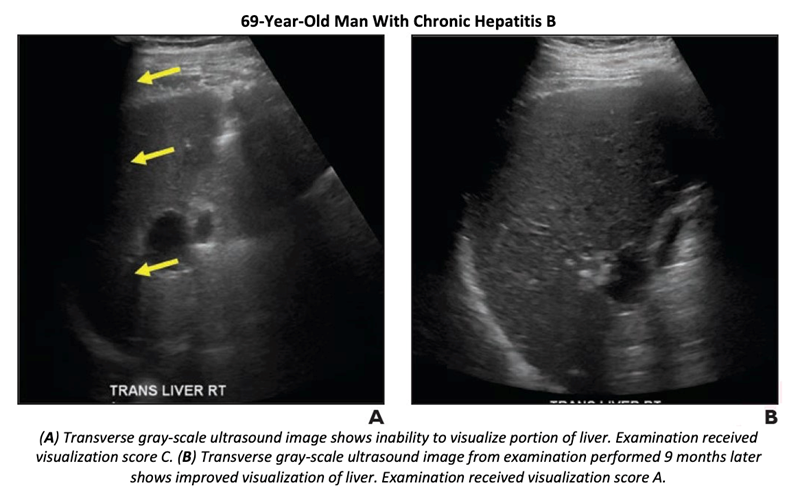Ultrasound LI-RADS Study Suggests a Single VIS C Exam Does Not Warrant Change of Surveillance strategy
 A multicenter study of ACR ultrasound LI-RADS visualization scores on serial examinations may inform decisions to switch to alternative surveillance strategies in patients at risk for HCC with visualization score C.
A multicenter study of ACR ultrasound LI-RADS visualization scores on serial examinations may inform decisions to switch to alternative surveillance strategies in patients at risk for HCC with visualization score C.
The retrospective study, published in the American Journal of Roentgenology, included patients at risk for HCC who underwent at least two HCC surveillance ultrasound examinations between January 2017 and November 2020 at Stanford University Medical Center and two institutions in Dallas, TX: University of Texas Southwestern Medical Center and Parkland Health and Hospital System. Frequencies of score remaining unchanged after variable numbers of preceding examinations with the given score were determined.
Noting any decision should consider the number of previous examinations with score C, “only 42% of patients with visualization score C on surveillances examination have score C on follow-up examination,” wrote corresponding author Aya Kamaya from the department of radiology at Stanford University School of Medicine in California.
Ultimately, the probability of repeat visualization score C on a subsequent examination increased with an increasing number of preceding examinations with score C. Frequency of score C was 42%, 67%, and 80% after 1, 2, and 3 consecutive preceding examinations with score C.
“Although not statistically significant, (the) presence of severe steatosis and advanced cirrhosis had the highest odds ratios (2.88 and 2.38, respectively) for repeat score C in multivariable analysis,” the authors acknowledged.